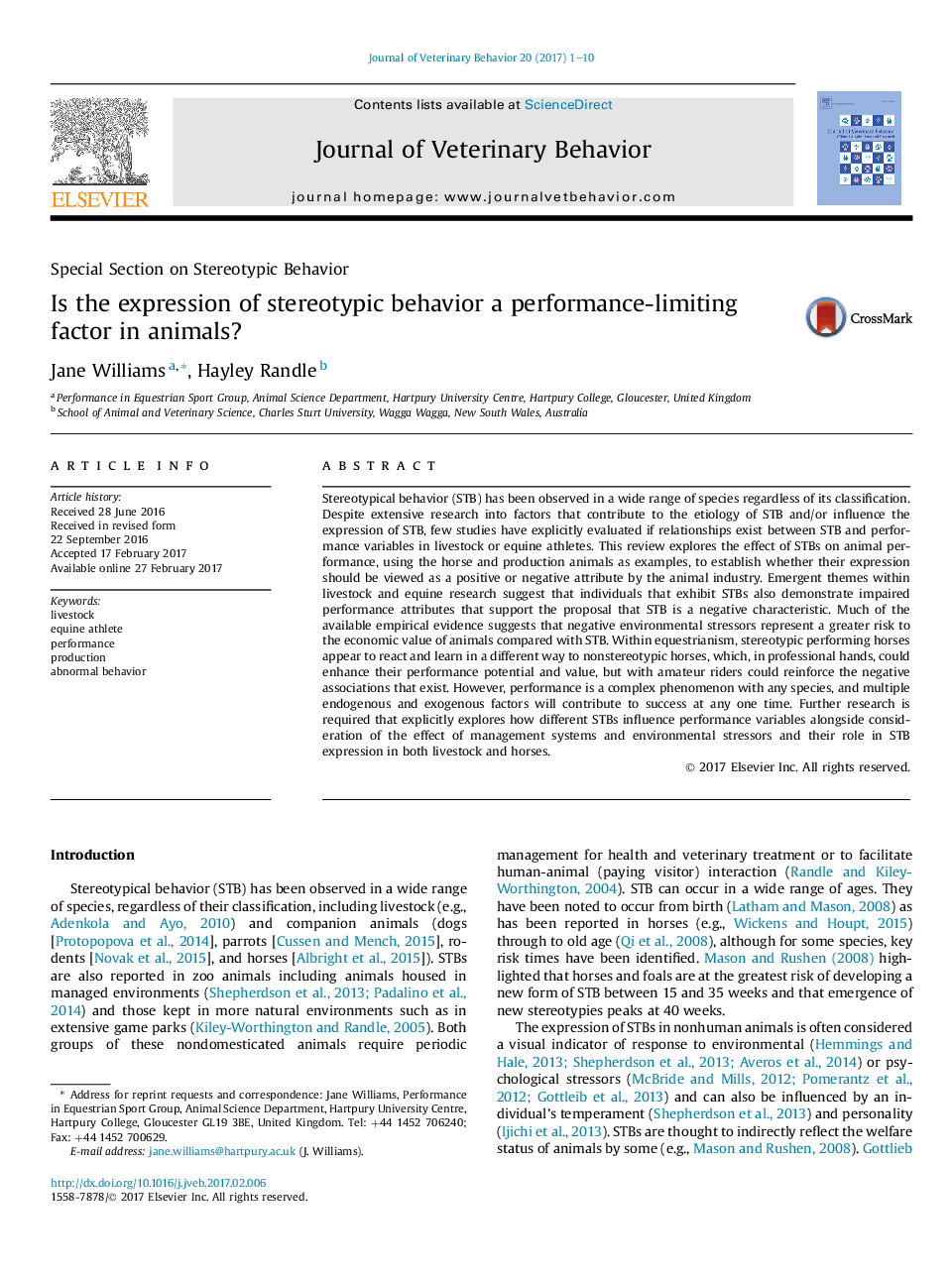| Article ID | Journal | Published Year | Pages | File Type |
|---|---|---|---|---|
| 5535823 | Journal of Veterinary Behavior: Clinical Applications and Research | 2017 | 10 Pages |
Stereotypical behavior (STB) has been observed in a wide range of species regardless of its classification. Despite extensive research into factors that contribute to the etiology of STB and/or influence the expression of STB, few studies have explicitly evaluated if relationships exist between STB and performance variables in livestock or equine athletes. This review explores the effect of STBs on animal performance, using the horse and production animals as examples, to establish whether their expression should be viewed as a positive or negative attribute by the animal industry. Emergent themes within livestock and equine research suggest that individuals that exhibit STBs also demonstrate impaired performance attributes that support the proposal that STB is a negative characteristic. Much of the available empirical evidence suggests that negative environmental stressors represent a greater risk to the economic value of animals compared with STB. Within equestrianism, stereotypic performing horses appear to react and learn in a different way to nonstereotypic horses, which, in professional hands, could enhance their performance potential and value, but with amateur riders could reinforce the negative associations that exist. However, performance is a complex phenomenon with any species, and multiple endogenous and exogenous factors will contribute to success at any one time. Further research is required that explicitly explores how different STBs influence performance variables alongside consideration of the effect of management systems and environmental stressors and their role in STB expression in both livestock and horses.
